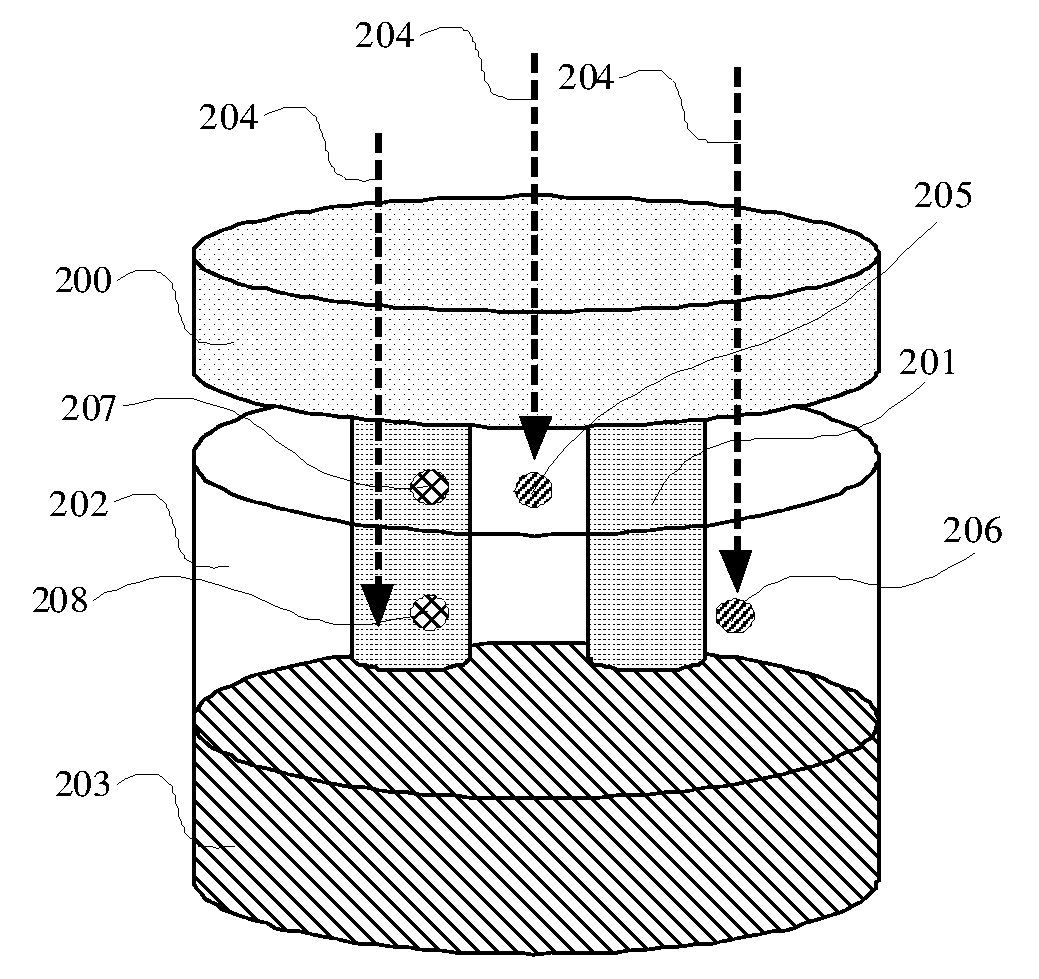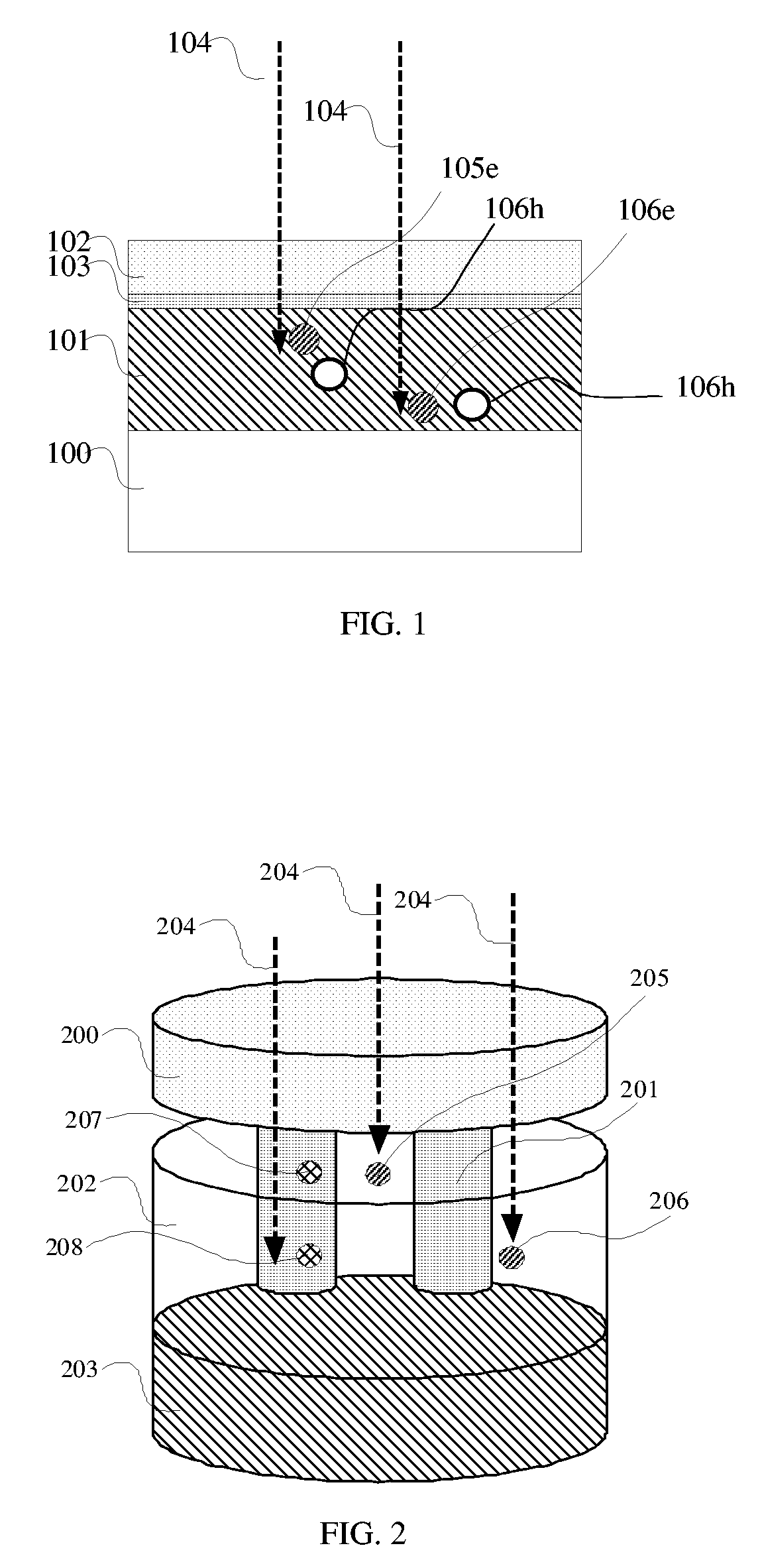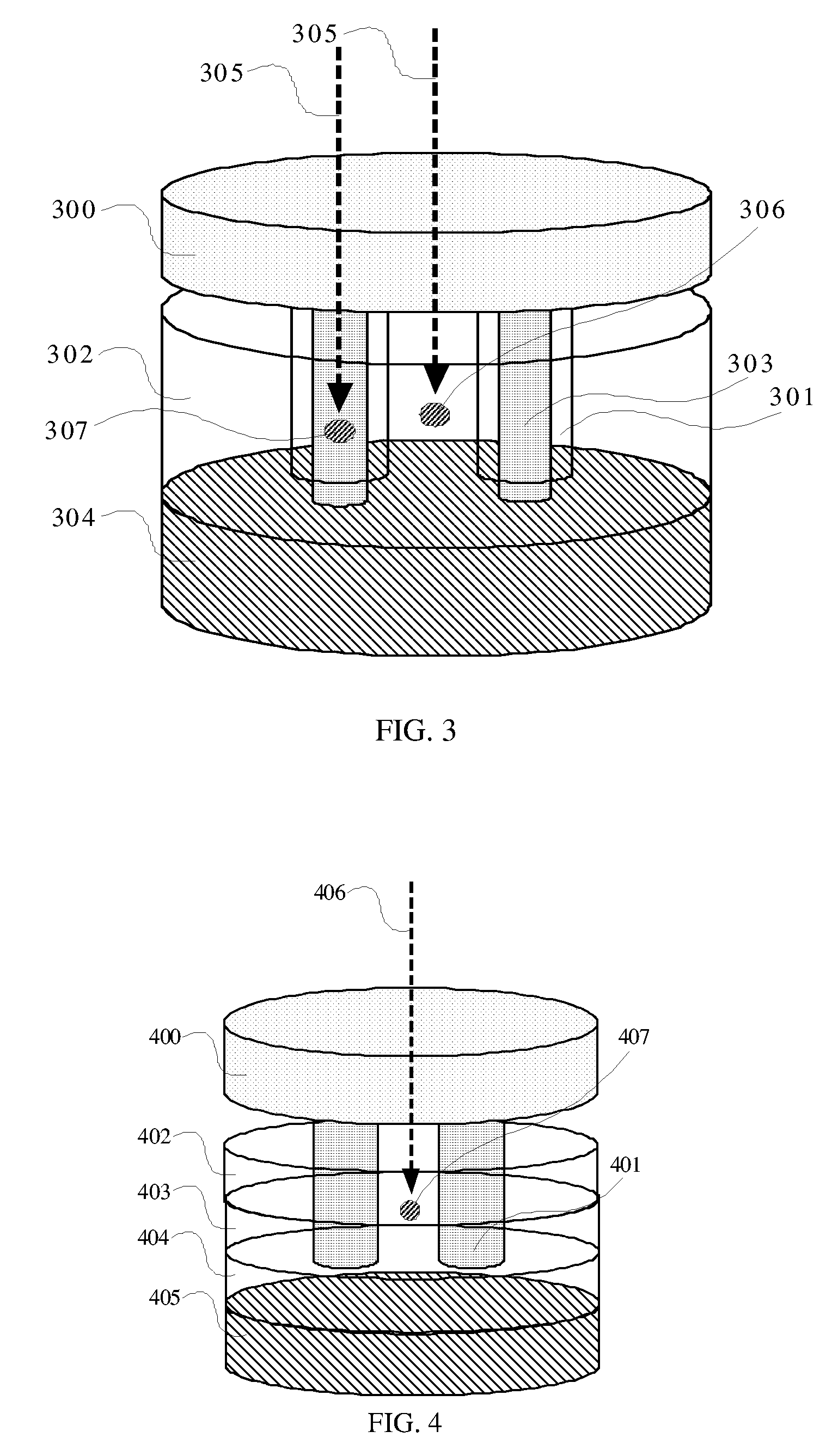Photovoltaic cells based on nanoscale structures
- Summary
- Abstract
- Description
- Claims
- Application Information
AI Technical Summary
Benefits of technology
Problems solved by technology
Method used
Image
Examples
Embodiment Construction
[0027] According to a preferred embodiment illustrated in FIG. 2, shown is a photovoltaic cell comprising plurality of nanometer(s)-scale wires or rods 201 electrically connected to an electrode 200. The nanometer(s)-scale wires or rods 201 can have metallic electrical conduction, p-type or n-type semiconductor electrical conduction. The nanometer(s)-scale wires or rods are further surrounded by an electronic material 202 having metallic electrical conduction, p-type or n-type semiconductor electrical conduction. The electronic material 202 is further electrically connected to an electrode 203. The electrode 200 has direct electrical contact to neither the electrical material 202 nor the electrode 203. As described above, the electrode 200 is intended to serve as a common electrode that connects all wires or rods 201. The electrode 203 is provided for the electronic material 202. The interface between the nanometer scale wires or rods 201 and the electronic material 202 form pn- or ...
PUM
 Login to View More
Login to View More Abstract
Description
Claims
Application Information
 Login to View More
Login to View More - R&D
- Intellectual Property
- Life Sciences
- Materials
- Tech Scout
- Unparalleled Data Quality
- Higher Quality Content
- 60% Fewer Hallucinations
Browse by: Latest US Patents, China's latest patents, Technical Efficacy Thesaurus, Application Domain, Technology Topic, Popular Technical Reports.
© 2025 PatSnap. All rights reserved.Legal|Privacy policy|Modern Slavery Act Transparency Statement|Sitemap|About US| Contact US: help@patsnap.com



